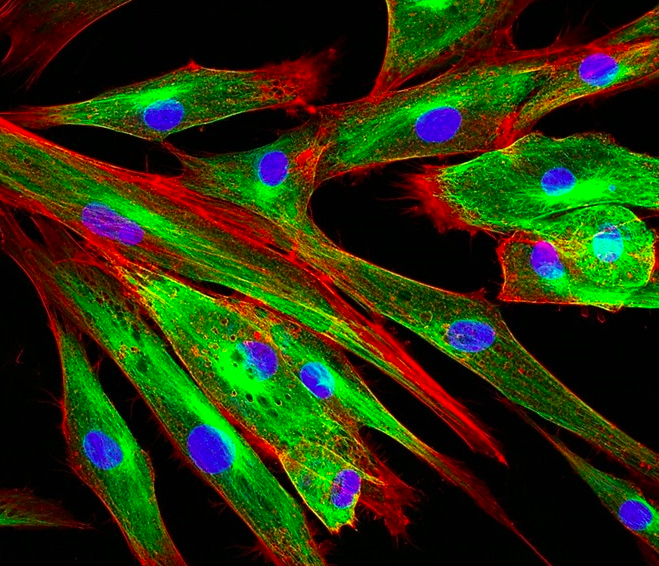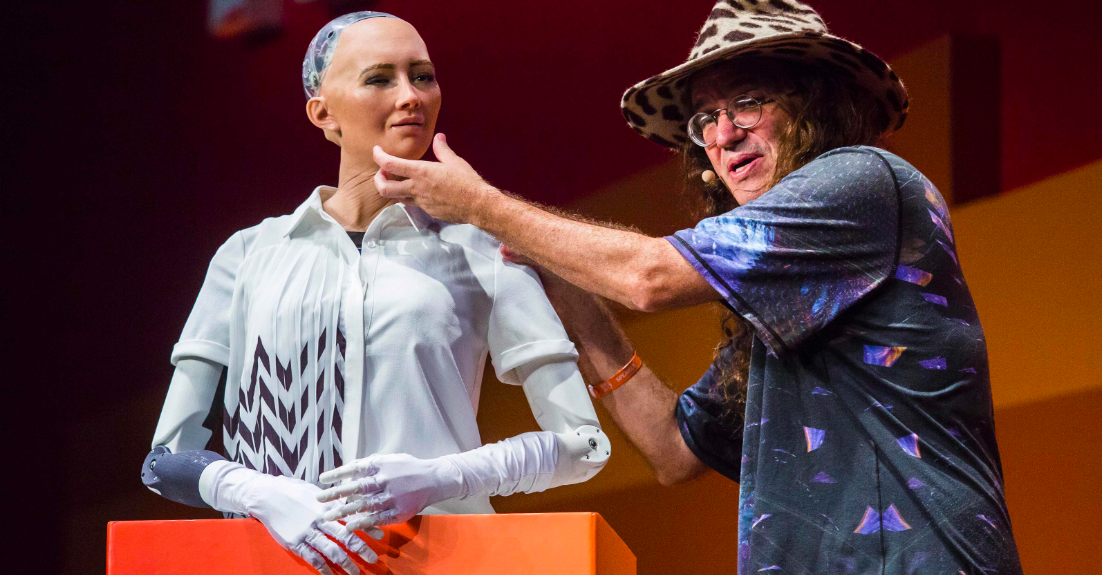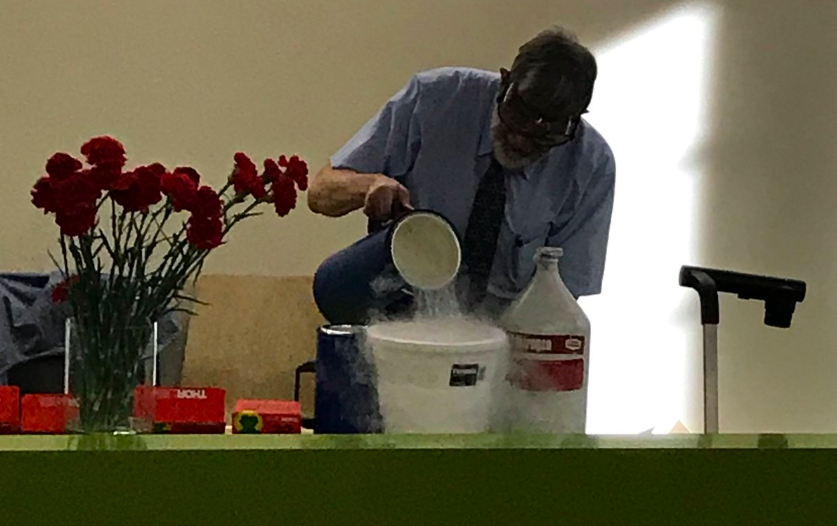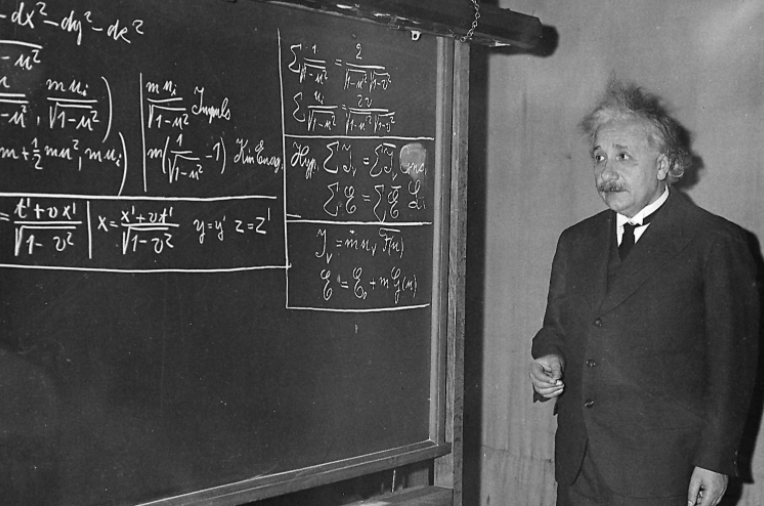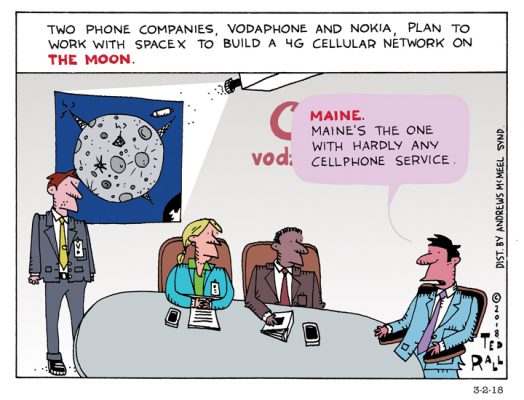aNewDomain.net — Oakland, the largest city in the East Bay, often gets the short end of the stick in terms of how people perceive it. Despite its reputation Oakland has many redeeming sites, one of which is relatively unique: a public observatory now called the Chabot Space and Science Center. This is not simply a publicly-accessible observatory, like the well-known Griffith Observatory in Los Angeles, but a truly public observatory where anyone can schedule time to use the telescopes and look at the stars. The history and development of the observatory, which I will cover here, is fascinating. While I was visiting the Chabot Space and Science Center I was told an incredible story. Make sure to scroll all the way down to hear this story. I promise it is worth it.

Photo credit: Richard Hay
The observatory has a rich history. Originally, it was built for school children of the Oakland public school district at Jefferson and 11th street. In the 1800s mechanical clocks were unreliable so the observatory procured a transverse meridian telescope, which keeps time by noting when stars pass a known meridian from a fixed point. Twice a day the telescope would sync the time for the city of Oakland.
Here is the meridian telescope Chabot called Leah in the 1800s, purchased to help keep the trains running on time.
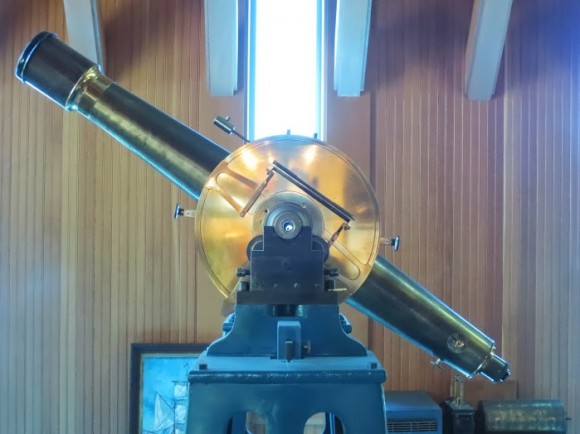
Photo credit: Richard Hay
This year (2013) is the 130th anniversary of the acquisition of telescope Leah in 1883. Leah is an 8″ refracting telescope. She was kept in a tower at Jefferson and 11th street and people would sign up to use her months in advance. The Leah dome was closed when I visited so there is a shot of the telescope (and a bit of my face) through the glass door.
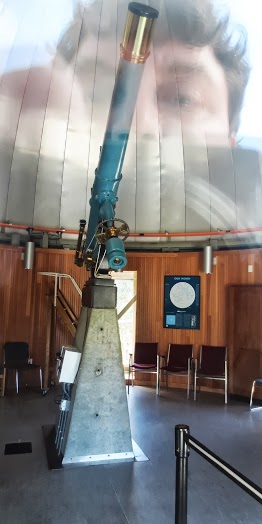
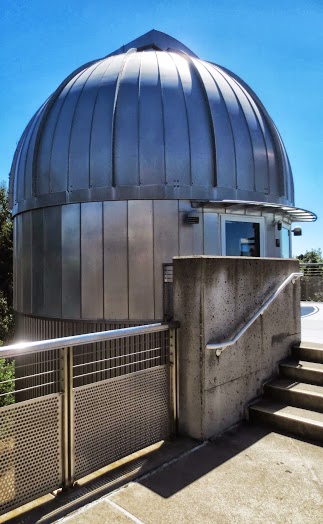
Image credits: Richard Hay
But alas, as Oakland grew so did the light pollution (from electric bulbs, gas lamps), which prevented the observatory’s visibility of the night sky. By 1915 the light pollution made the observatory unusable in the city, so they selected a new spot on Mountain Boulevard, which was shielded from the light of the city by the Redwood Hills.
And, when the Observatory moved, they decided to procure another telescope. This one was a real beauty. Purchased in 1915, it was one of the largest refracting telescopes out there. Rachel — 31 feet long with a 20-inch primary lens. The largest refracting telescope in the world has a 40-inch lens (so double the size of Rachel), but this telescope has a tale to tell.
Rachel was made to be displayed at the Palace of Fine Arts as part of the Panama-Pacific Exhibition in honor of the opening of the Panama Canal. This was a big deal for San Francisco since it meant you no longer had to go all the way around South America to get to New York by ship. Oakland decided to buy the telescope so they could save on shipping costs, as it was already a Bay Area local.
Here’s Rachel. She is 98 years old this year (2013), so in a couple of years there with be a centennial party.
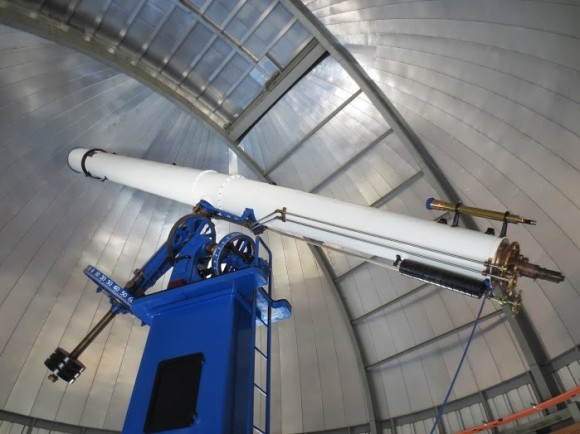
Photo credit: Richard Hay
In time, the Mountain Boulevard location was found to be unsafe because it sat right on the Hayward Fault. So, the observatory closed in the 1980s. It took 20 years to get the funds to build the current observatory, which sits on the peak of one of the redwood hills on Skyline Drive.
True to the tradition they had established when they first moved the observatory, Oakland added another telescope to the observatory when they moved up to Skyline. This one is not a refractive telescope, but a reflective one (this allows for bigger mirrors and the ability to see dimmer stars). The new telescope has a 36-inch mirror and is called Nellie, named after the daughter of the main donors (not the “Whoa Nellie” reference).
There are public viewing hours on Friday and Saturday nights when you can view the cosmos through Nellie’s eye.

Photo credit: Richard Hay
There are a number of interesting other exhibits at the Chabot Space and Science Center. There is a replica Chinese Armillary (a device for calculating the angles of stars from a fixed point).
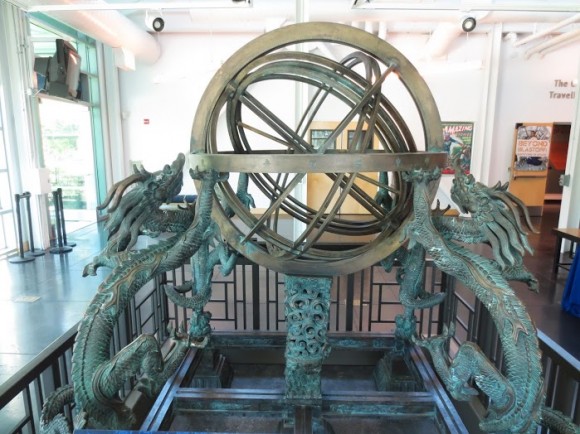
Photo credit: Richard Hay
A Soviet Soyuz Capsule (pretty similar design for 30 years and still running within budget). How do you think they get people on and off the International Space Station these days?
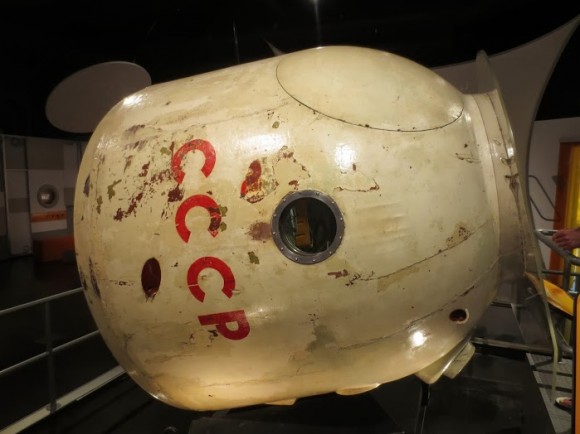
Photo credit: Richard Hay
There is even a hurricane simulator and Einstein’s telescope.
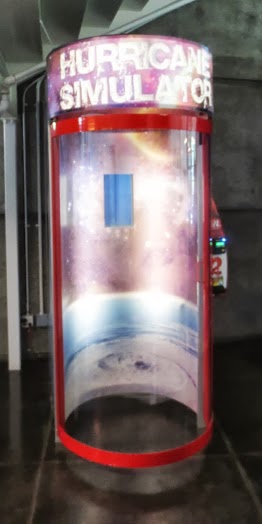
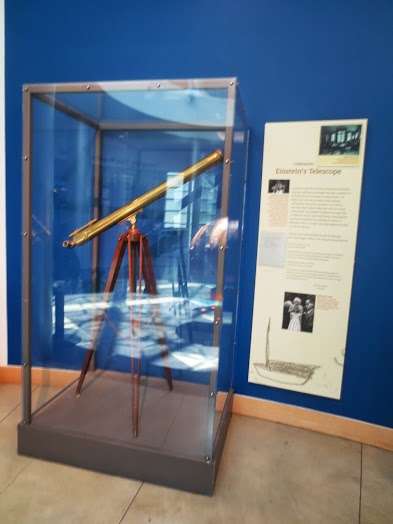
Photo credits: Richard Hay
I must admit I was underwhelmed by the hurricane simulator (I paid the $2 and tried it). It only goes up to 79mph to simulate a category 1 hurricane. The experience is quite noisy — basically lots of hurricane sounds played into the wind chamber while air blows.
Now, for the big story you’ve all been waiting for …
I ran into a volunteer docent at the observatory named Lydia who was in her 70s. She relayed a great story about the glory moment in the history of the Chabot Space & Science Center. This took place in April of 1970, when the observatory was still at the Mountain Boulevard location.
The Apollo 13 mission had launched on April 11 and had encountered massive failures, thus needing to return to Earth. The ship carrying the astronauts approached the atmosphere but there were issues with the angle of entry. The shuttle needed assistance to get the angle right and send the astronauts into the ocean (instead of crashing) for recovery.
Houston called Chabot because it was the only observatory with clear skies that could pinpoint the module and relay the coordinates to Houston. There was a class at the observatory that night. The teacher quickly enlisted the students to find the Apollo 13 module and precisely measure its position at marked intervals over time to relay the data to NASA.
They used Rachel and conveyed the observations to Houston, which used the data to bring the Apollo 13 astronauts safely home.
The class (and the observatory) was spectacularly thrilled at the role they had played in the national story, and many of the students were inspired and went on to become scientists and engineers. But one didn’t. His name is Tom Hanks. He went on to be an actor.
When Hanks heard that there was going to be a movie made about the Apollo 13 mission, he had his agent contact the studio and press to get him in the movie. “What do you know about the Apollo 13 mission?” they asked him. “Everything,” he said. Hanks was born in 1956, so he would have been 14 in 1970.
Great story. Thanks again to Lydia for telling it to me. That is a wonderful example of what a public observatory can offer a community. A love of the stars and inspiration for the future. We can all thank Anthony Chabot, who gave the initial $3000 to build the first iteration of Oakland’s public observatory, and who the center is now named after.
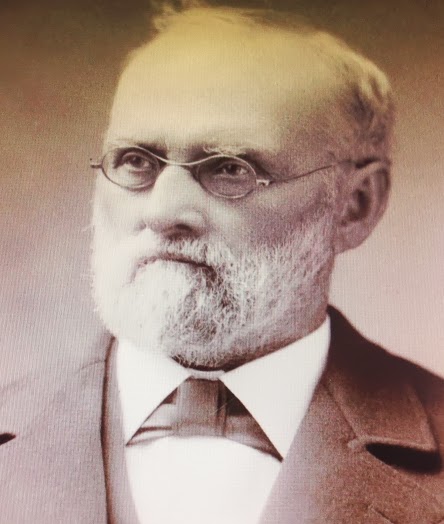
Photo credit: Richard Hay
Think about the Chabot Space and Science Center next time you consider Oakland. Or Berkeley. Or Emeryville. Or Alameda. Or any East Bay community, for that matter. Home of the Oakland A’s and the Golden State Warriors. And home to a first rate public observatory.
I am Richard Hay, Google Engineer and sometimes writer. And this piece was composed entirely on my Chromebook Pixel.
Richard Hay is the senior science editor at aNewDomain.net. He’s a staff engineer in network testing at Google. Email him and let him know the sort of stuff you’d like him to cover here on aNewDomain.net. He’s Richard@aNewDomain.net and +Richard Hay on Google+.





